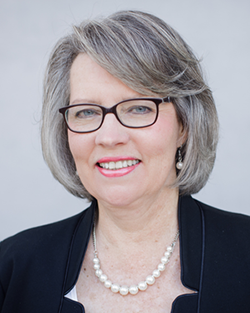Is assisted hygiene right for you?

Dental assistants use their expertise to help staff across the entire dental practice, but when working chairside, they’re probably accustomed to working with a dentist. As many dental offices across the country face packed patient schedules and a shortage of qualified employees, some practices are turning to assisted hygiene as a solution.
In this model, a dental assistant supports a hygienist with non-clinical or preparatory tasks, allowing the hygienist to focus on patient care and reduce downtime between appointments. Assisted hygiene allows dental assistants to broaden their skillset and collaborate with hygienists, while directly impacting the practice’s productivity and bottom line.
The benefits of assisted hygiene
Dental assistants are versatile team players, making them a great fit for assisted hygiene. This model gives dental assistants the opportunity to perform a range of duties — such as charting, educating patients, and taking radiographs — that help the hygienist work more efficiently. Embracing this model also helps dental practices increase productivity and address staffing shortages.

“I loved assisted hygiene because it allowed me to see more patients and be less tired and stressed than when I did solo hygiene. Dental assistants are vital in delivering good, thorough patient care.”
— Dianne Glasscoe Watterson
Dianne Glasscoe Watterson, RDH, MBA, of Lexington, North Carolina, began her career as a dental assistant in private practice, where she earned her Certified Dental Assistant (CDA) certification. A few years later, she became a Registered Dental Hygienist (RDH) and was introduced to assisted hygiene.
“I loved assisted hygiene because it allowed me to see more patients and be less tired and stressed than when I did solo hygiene,” Watterson says. “Dental assistants are vital in delivering good, thorough patient care.”
After a decade as an RDH, Watterson started a consulting business focused on dental practice operations, including business and clinical aspects. To help clients improve productivity, efficiency, and profitability, she often recommended an assisted hygiene model.
“As far as productivity is concerned, it’s easy to see a 33% increase,” says Watterson. “I’ve seen other [practices] do as much as a 50% bump in productivity, particularly if they have good office managers who know how to keep the schedule full.”
What to expect in assisted hygiene
While assisted hygiene responsibilities can vary by practice and state, dental assistants often focus on taking x-rays, charting, sterilizing instruments, delivering patient education, and setting up and cleaning operatory rooms. Some states allow dental assistants to apply fluoride and sealants.
“My assistant would take the patient’s blood pressure. She would also inquire about their medical history, and she could take radiographs,” says Watterson. “In some situations, the assistant would dispense the oral hygiene aids. The assistant would schedule the patient’s next visit after I went to the next chair and started on the next patient. Then they would dismiss the patient and turn the operatory over.”
For Watterson, working with an assistant was especially helpful for time-consuming tasks, such as charting. “The most important thing was their help with periodontal charting,” she says. “To do periodontal charting by myself, where I record the numbers either on a piece of paper or on the computer, it takes a minimum of 10 minutes.”
While there may be overlap in responsibilities when assisting a hygienist compared to assisting a dentist, there are differences in how assistants interact with hygienists. “I think the biggest difference is that you are not sitting as much with this person during the day,” Watterson says. “The only time you really would be sitting for long periods is when the hygienist has a perio patient and needs a lot of suctioning for that particular procedure.”
Like any good team dynamic, mutual respect and clear communication about roles and responsibilities are critical to the success of the assisted hygiene model.
“The assistant has to be very clear about what their duties are. I’m a big proponent of job descriptions in dental offices where everybody knows what their duties are written down in black and white,” says Watterson. “This is a situation where the assistant becomes the hygienist’s strong right arm. They need have a working relationship where they’re like a well-oiled machine.”
Considerations for assisted hygiene
To fully embrace the benefits of assisted hygiene, the dental practice must implement certain infrastructures. Watterson recommends designating operatory rooms specifically for assisted hygiene.
“There has to be two mirrored operatories,” she says. “A doctor can’t have an extra operatory and say, ‘We’re going to do assisted hygiene, and you can use that other room, but we might need to put a patient back there, too.’ That will not work.”
Some practices may have a dental assistant who floats between doctors and hygienists. This approach can work when covering an absence or helping on a particularly busy day, but if a practice is dedicated to improving efficiency and productivity in the long term, the office must be staffed accordingly.
“Doctors have to hire a dedicated assistant for hygiene. They can’t hire another assistant and say, ‘You’re going to help the hygienist, but you might help us, too,’” says Watterson.
The dental office manager plays a crucial role in ensuring the success of assisted hygiene. Before adopting this model, the dental practice should agree on a plan to schedule patients using a two-column approach, which allows the hygienist to alternate between patients.
“The office needs to be on a 10-minute-increment schedule instead of a 15-minute schedule, because it won’t work well with assisted hygiene,” says Watterson. “In a typical 8 a.m.-5 p.m. day, the hygienist is going to see 12 to 13 patients. If there’s a lot of children in the mix, you could go up to 14 or 15 [patients].”
It’s important to remember that assisted hygiene is not just about maximizing patient volume but improving workflow and patient care with the skilled support of a dental assistant.
“Assisted hygiene is not accelerated hygiene — it’s a way to do things more efficiently.” says Watterson. “Patients are different, so you have to be discriminating and say, ‘Well, this patient needs more time with a hygienist in the mouth.’ It is about assistants and hygienists working together within the boundaries of regulations in their state to give the patient the best care possible.”

